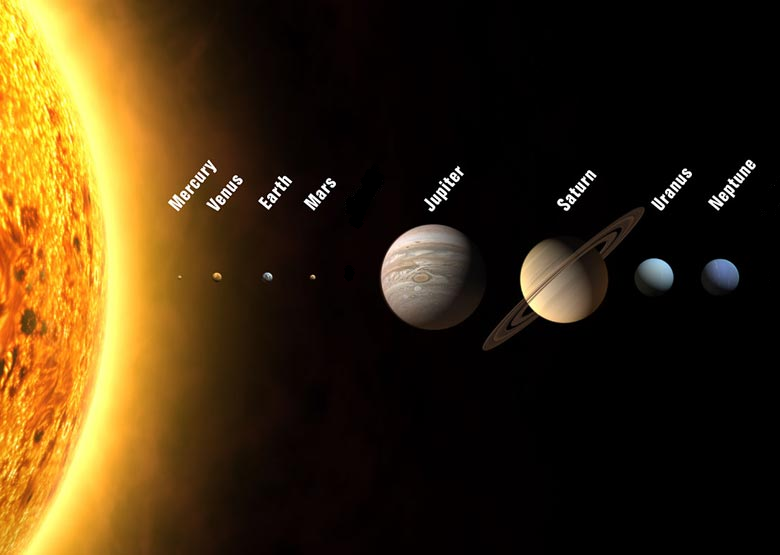Orbital Chaos Inevitable

It’s a little bit less certain that the inner planets— Mercury, Venus, Earth, and Mars—will still be around to die that way.
“There is a one percent chance the inner solar system will go dramatically unstable during the next five billion years,” says Laughlin. The problem is a weird long-distance connection between Jupiter and Mercury. When Jupiter’s closest approach to the sun lines up with Mercury’s noticeably squashed orbit in just the right way, Jupiter exerts a slight but steady tug. Over billions of years this gives Mercury a 1-in-100 chance of crossing the orbit of Venus. There is a further l-in-500 chance that if Mercury goes nuts, it will also perturb the orbit of Venus or Mars enough for one of them to hit Earth—or miss it by several thousand miles, which would be almost as bad. “The entire Earth would get stretched and melted like taffy,” says Laughlin, eagerly demonstrating with his hands.
That faint risk of apocalypse—a 1-in-50,000 chance that the Earth will succumb to orbital chaos before the sun incinerates it—is our legacy of the solar system’s youth, when it turned inside out. “If you give gravity enough time,” says Levison, “it will do stuff like this.”

 Print
Print